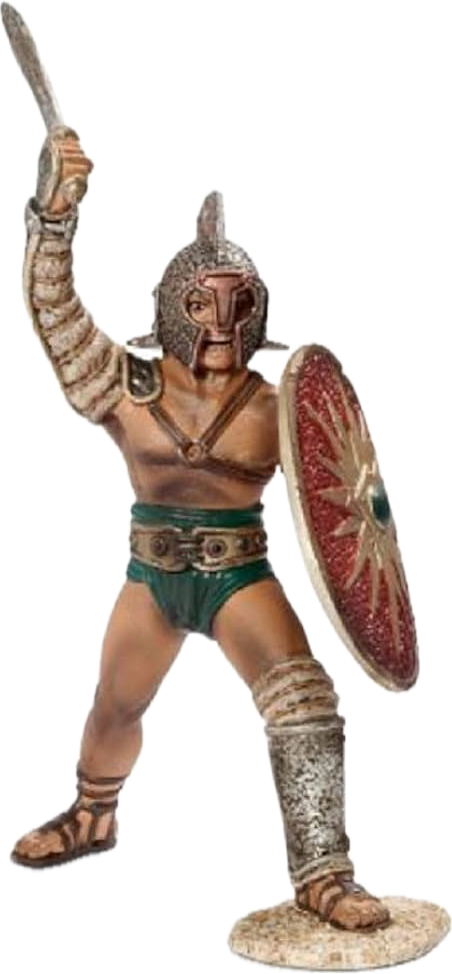
gladiator

The dragon rider, but also most other male figures Schleich released in the early 2010s carry weapons. Although there are a few female characters that are also depicted as soldiers or warriors, the majority is male. Armed Schleich figures aside from the dragon riders included knights, gladiators, and other fantasy soldiers. Additionally, it is noticeable that one of the very few male fairies is armed. The portrayal of gender and representation in toys can influence how children perceive gender stereotypes (Varney, 2002). In addition, toys can form the imagination of children while shaping different dreams and expectations for different genders (Varney, 2002).
Therefore, a depiction of men as warriors in toys inclines that men are expected to be strong fighters. As the dragon rider is described to be young, the male attributes described are deemed to be desirable from a young age. Further, it also teaches boys to have leadership skills and learn strategy when recreating fights (Varney, 2002). The representation teaches kids that men are to be taken seriously (Varney, 2002). Although most male Schleich figures are not as muscular or dominant as action figures, boys were still taught to become fighters (Varney, 2002). Girls on the other hand were expected to let men protect them.

In Schleich this becomes clear through the male fairy Falaroy who is labelled as the brave protector of the fairy princess (Cardport, n.d.). Further, the product description portrays him as someone who takes women’s hearts in storm (Cardport, n.d.), which teaches children that male bravery and the role of protective fighters are meant to be attractive. This enables the endorsing of heteronormativity (Wagner-Ott, 2002).
Although the female dragon fighter is also described to be prepared to protect the country in a fight, she is not described as strong and brave (Bayala: Auruun, n.d.). Instead, she is described to be entrancing, wonderful, and exotic (Bayala: Auruun, n.d.), which supports stereotypes of Asian women by creating an insider vs outsider perspective (Khalife, 2016).